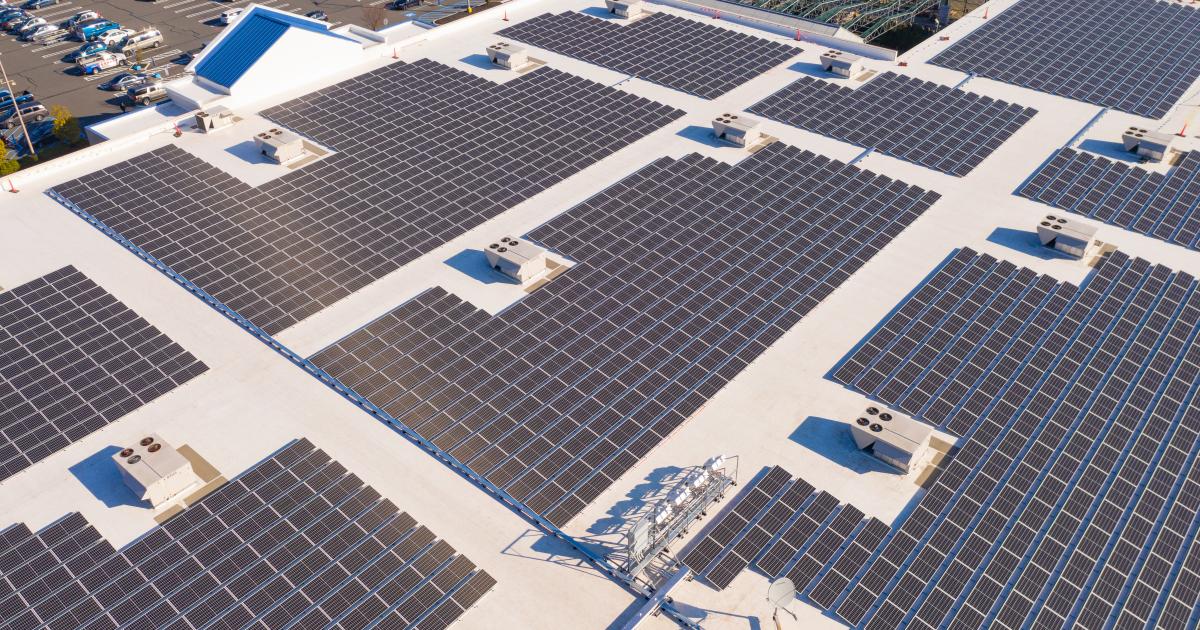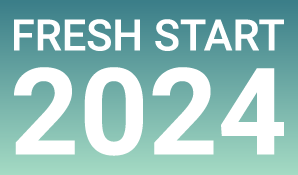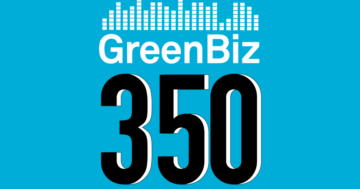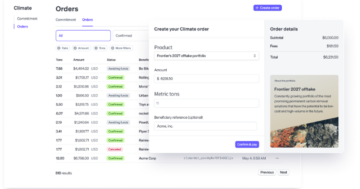
Like many retailers, Lowe’s is under pressure from shareholders and activists to track and reduce its greenhouse gas emissions. And Scope 3 emissions, which come from suppliers, are the hardest ones to quantify and abate.
Lowe’s has tackled its Scope 3 emissions with a unique blend of education, consulting and persuasion — specifically in a series of webinars for suppliers hosted by Campbell Weyland, a senior analyst in sustainability and compliance for the century-old home improvement chain. Beginning in January 2023, in more than 15 sessions, Weyland has talked suppliers through the complexities of emissions reporting, showing them how to gather data related to their emissions and helping them find ways to become more energy-efficient.
So far, about 160 of Lowe’s suppliers have attended, learning how to calculate their own Scope 1 and Scope 2 emissions. And the number of suppliers reporting emissions to Lowe’s has more than doubled.
In 2022, Lowe’s set a goal to reach net-zero greenhouse gas emissions by 2050. In 2021 the company emitted a total of 1,552 tonnes of CO2 equivalents, according to GlobalData. Scope 3 emissions, also referred to as value chain emissions, are out of Lowe’s control. And Lowe’s executives understood that most suppliers weren’t prepared to provide the information it needed.
“When I would say, ‘Tell me your sustainability plan,’ some suppliers would look at me with a blank face,” said Chad Sanders, a merchandising vice-president for Lowe’s.
“Our pitch was, ‘You’re getting a free consultant,’” says Weyland. “‘You’re getting ahead of regulations.’ Now we have a ton of retailers setting value chain targets. We’re really pleased with our supplier community and them wanting to join us in this journey.”
Brief is better
Weyland’s first attempt at outreach was not encouraging. Soon after the net zero goal was announced, he sent an email to suppliers asking for their cooperation. The response: crickets. Of the email, Weyland said, “It was very sustainability focused. It was probably 1,000 words. I think no one read it. It was not the right approach.”
In April 2022, Lowe’s tried again. This time merchants — those responsible for making purchases from the suppliers — sent a simple two-line email to their vendors. The email said that Lowe’s needed suppliers to start reporting their carbon emissions by that August. To get started, Lowe’s asked for the name and contact information of their sustainability lead.
There was no ultimatum, but suppliers got the message. And Weyland embarked on an ongoing journey to explain emissions reporting to a vendor population that was largely unfamiliar with this framework.
A new way of thinking
CM Tucker Lumber Co., in Pageland, South Carolina, is a fourth-generation family business — so by its very longevity, it’s sustainable in a way that few businesses manage. When it comes to sustainability, “I thought we were ahead of the game,” said Morgan Farthing, who heads up purchasing for the company. “Then at the first webinar Campbell started talking about Scope 1 and it was definitely like, ‘We are not ahead of the game.’”
In addition to hosting webinars, Weyland found himself acting as a consultant to Lowe’s vendors. When CM Tucker leaders said that it would be too expensive to switch out its largest forklifts for electric ones, Weyland sent them an email about a state grant designed to make it more affordable.
He pitched LED lights, which pay for themselves relatively quickly. He pointed out that eliminating waste in the manufacturing process would not only cut a company’s carbon footprint but could save money and add efficiency. Soon some suppliers, he said, were on the phone with him twice a week.
Weyland also tries to make the webinars as welcoming and straightforward as possible. “I thought that first webinar would be an assignment,” said Allison Kelly, a process engineer for Lowe’s supplier M-D Building Products, which makes products to help weatherize buildings. “It was more like a kickoff to a community event.”
Mapping the value stream
Weyland uses lessons learned by Lowe’s in its own sustainability process and passes them on to the vendors. He emphasizes that suppliers probably already have all the data they need to calculate their Scope 1 emissions, but they might not have it all in one place. Once it’s gathered, he helps them load it into a calculator developed by the U.S. Environmental Protection Agency.
“Instead of sending us a link and saying, ‘Good luck, Morgan and David,’ Campbell walked us all through it,” Farthing said.
For a lumber supplier such as CM Tucker, Scope 1 and 2 emissions are fairly straightforward: mostly from energy consumption from electricity and fuels for vehicles and other machinery. Other suppliers had to look more closely at their manufacturing processes. M-D Building Products, for example, used an oil-based evaporative lubricant for metal fabrication. But that lubricant releases carbon dioxide as it evaporates — a total of 36 metric tons a year. When Kelly asked the purchasing department to look for greener alternatives, they found one that is price-competitive, kinder on employees’ skin and free of CO2 emissions.
Instead of sending us a link and saying, ‘Good luck,’ Campbell walked us all through it.
M-D Building Products has also begun mapping its value stream — rethinking the locations of machinery and raw materials, for example, to make production more efficient.
That has multiple benefits. Fewer forklift trips mean fewer emissions. If a product has a defect, operators can stop production much more quickly, which dramatically decreases waste.
The value stream mapping project for M-D’s door jamb kit product line, which includes items such as weatherstripping, has already delivered results: a 60 percent decrease in work-in-progress inventory, and a 75 percent reduction in the lead time necessary for product to get through the plant, according to Nathan Hoffman, a process engineer for M-D Building Products.
Tackling Scope 3 emissions
This year, Weyland’s webinars will focus on suppliers’ Scope 3 emissions. Meanwhile, Lowe’s has released its wood sourcing policy and a report documenting its impact on primary forests, in response to urging from Green Century Capital Management. Lowe’s has also agreed to release more emissions data about the products it sells, which, notes Weyland, “range from tomato plants to lawn mowers.”
Monitoring and documenting Lowe’s supply chain emissions remains a daunting undertaking. Weyland is encouraged by the momentum he’s building among his suppliers, who are starting to see the advantages — environmental and financial — of examining their carbon footprints.
“We thought we weren’t going to be able to make big changes,” said Kelly. “We are an older organization. But we have been able to find so many opportunities that benefit the bottom line, or that cost nothing and help us run more efficiently.”
“I think it’s contagious,” added Andrew Jordan, M-D Building Products’ senior director of sales. “Everyone starts looking for opportunities.”
- SEO Powered Content & PR Distribution. Get Amplified Today.
- PlatoData.Network Vertical Generative Ai. Empower Yourself. Access Here.
- PlatoAiStream. Web3 Intelligence. Knowledge Amplified. Access Here.
- PlatoESG. Carbon, CleanTech, Energy, Environment, Solar, Waste Management. Access Here.
- PlatoHealth. Biotech and Clinical Trials Intelligence. Access Here.
- Source: https://www.greenbiz.com/article/how-lowes-using-supplier-education-tackle-scope-3-emissions
- :has
- :is
- :not
- $UP
- 000
- 1
- 15%
- 160
- 2%
- 2021
- 2022
- 2023
- 2050
- 36
- 60
- 7
- 75
- a
- Able
- About
- According
- acting
- activists
- add
- added
- addition
- advantages
- affordable
- After
- again
- agency
- agreed
- ahead
- All
- already
- also
- alternatives
- among
- an
- analyst
- and
- Andrew
- announced
- approach
- April
- ARE
- AS
- asked
- asking
- assignment
- At
- attempt
- AUGUST
- BE
- become
- been
- Beginning
- begun
- benefit
- benefits
- Big
- Blend
- Bottom
- Building
- buildings
- business
- businesses
- but
- by
- calculate
- calculator
- campbell
- CAN
- capital
- carbon
- carbon dioxide
- carbon emissions
- carbon footprint
- Carolina
- Century
- chain
- Changes
- closely
- CO
- co2
- co2 emissions
- come
- comes
- community
- company
- Company’s
- complexities
- compliance
- consultant
- consulting
- consumption
- contact
- control
- cooperation
- Cost
- could
- Cut
- data
- David
- decrease
- decreases
- defect
- definitely
- delivered
- Department
- designed
- developed
- Director
- Door
- doubled
- dramatically
- Education
- efficiency
- efficient
- efficiently
- Electric
- electricity
- eliminating
- embarked
- Emissions
- emphasizes
- encouraged
- encouraging
- energy
- Energy Consumption
- engineer
- environmental
- Environmental Protection Agency
- equivalents
- Ether (ETH)
- Event
- everyone
- Examining
- example
- executives
- expensive
- Explain
- Face
- fairly
- family
- far
- few
- fewer
- financial
- Find
- First
- Focus
- focused
- Footprint
- For
- found
- Framework
- Free
- from
- fuels
- game
- GAS
- gather
- gathered
- get
- getting
- GlobalData
- goal
- going
- got
- grant
- Green
- greener
- greenhouse gas
- Greenhouse gas emissions
- had
- hardest
- Have
- he
- heads
- help
- helping
- helps
- him
- himself
- his
- Home
- hosted
- hosting
- How
- How To
- HTTPS
- i
- if
- improvement
- in
- includes
- information
- instead
- into
- inventory
- IT
- items
- ITS
- January
- join
- Join us
- Jordan
- journey
- jpg
- kit
- largely
- largest
- lead
- leaders
- learned
- learning
- Led
- Lessons
- Lessons Learned
- lights
- like
- Line
- LINK
- load
- locations
- longevity
- Look
- looking
- lowe's
- luck
- machinery
- make
- MAKES
- Making
- manage
- management
- manufacturing
- many
- mapping
- materials
- me
- mean
- Meanwhile
- merchandising
- Merchants
- message
- metal
- metric
- might
- Momentum
- money
- more
- more efficient
- Morgan
- most
- mostly
- much
- multiple
- name
- nathan
- necessary
- Need
- needed
- net
- net-zero
- New
- no
- Notes
- nothing
- now
- number
- of
- older
- on
- once
- ONE
- ones
- ongoing
- only
- operators
- opportunities
- or
- organization
- Other
- our
- out
- outreach
- own
- passes
- Pay
- percent
- phone
- Pitch
- pitched
- Place
- plan
- plant
- plants
- plato
- Plato Data Intelligence
- PlatoData
- pleased
- policy
- population
- possible
- prepared
- pressure
- primary
- probably
- process
- processes
- Product
- Production
- Products
- project
- protection
- provide
- purchases
- purchasing
- quickly
- range
- Raw
- reach
- Read
- really
- reduce
- reduction
- referred
- regulations
- related
- relatively
- release
- released
- Releases
- remains
- report
- Reporting
- response
- responsible
- Results
- retailers
- right
- Run
- s
- Said
- sales
- sanders
- Save
- say
- saying
- says
- scope
- see
- Sells
- sending
- senior
- sent
- Series
- sessions
- set
- setting
- Shareholders
- showing
- Simple
- Skin
- So
- some
- Soon
- Sourcing
- South
- South carolina
- specifically
- start
- started
- Starting
- starts
- State
- Stop
- straightforward
- stream
- such
- supplier
- suppliers
- supply
- supply chain
- Sustainability
- sustainable
- Switch
- tackle
- talked
- talking
- targets
- than
- that
- The
- the information
- their
- Them
- themselves
- then
- they
- Think
- this
- those
- thought
- Through
- time
- to
- Ton
- tons
- too
- Total
- track
- tried
- tries
- Twice
- u.s.
- under
- understood
- unfamiliar
- unique
- urging
- us
- used
- uses
- using
- value
- Vehicles
- vendor
- vendors
- very
- walked
- wanting
- was
- Waste
- Way..
- ways
- we
- webinar
- Webinars
- week
- welcoming
- were
- when
- which
- WHO
- will
- with
- wood
- words
- would
- year
- Your
- zephyrnet
- zero







